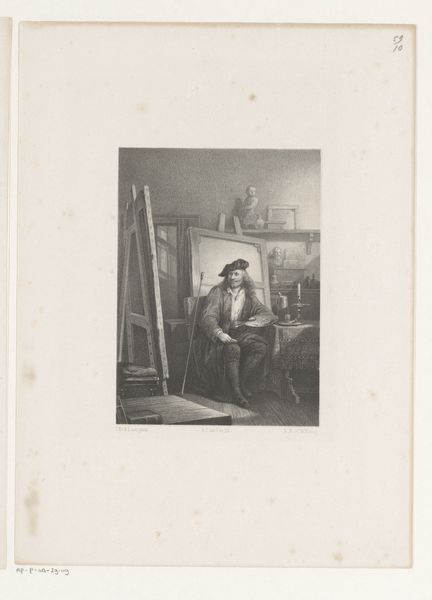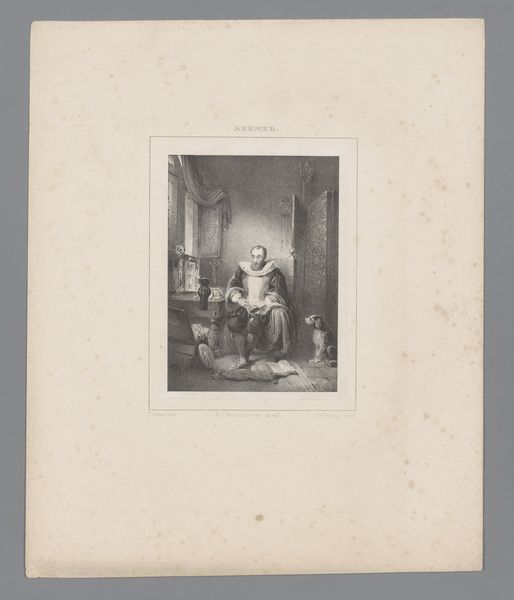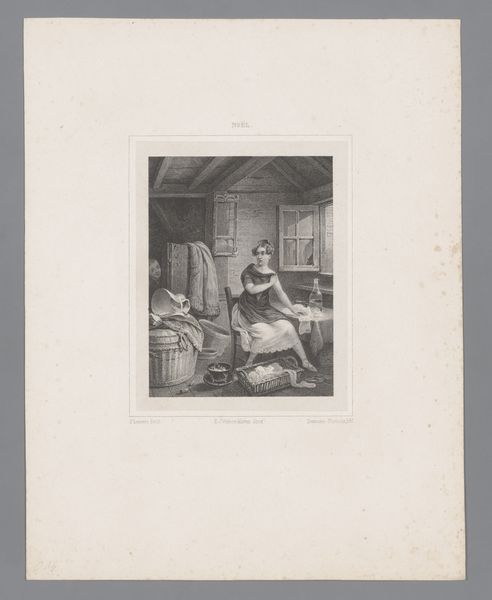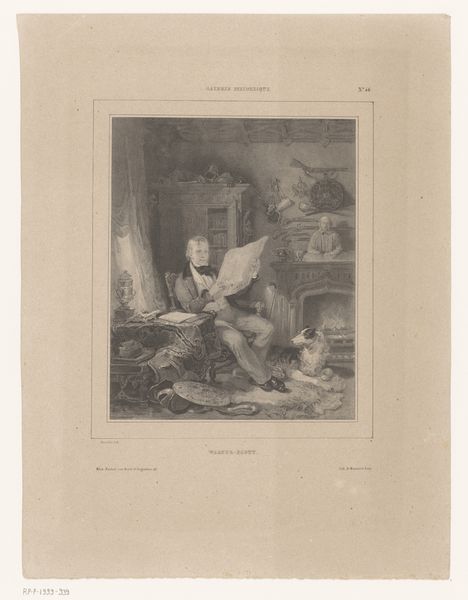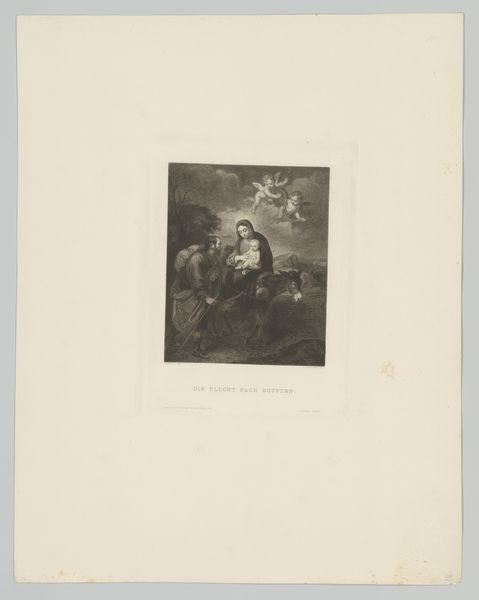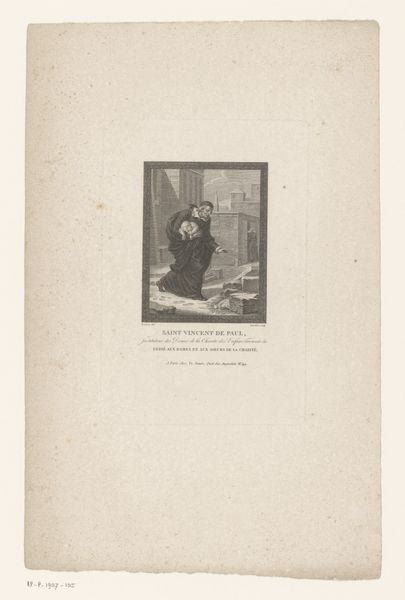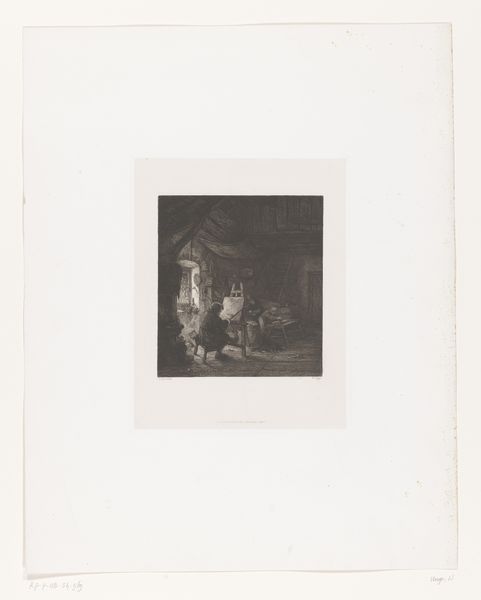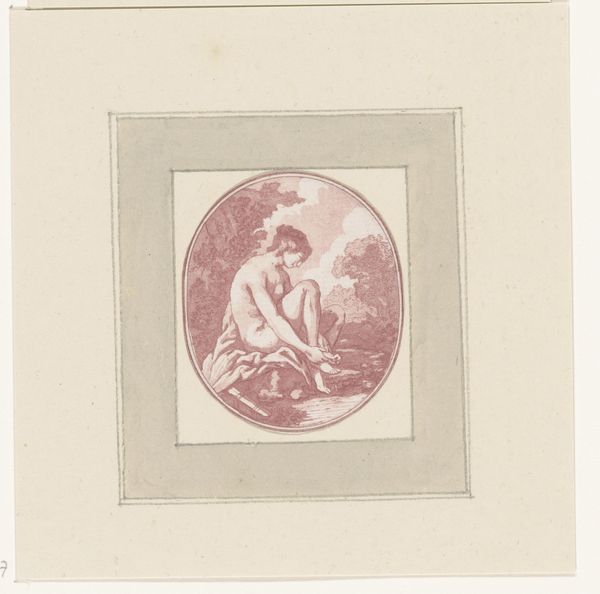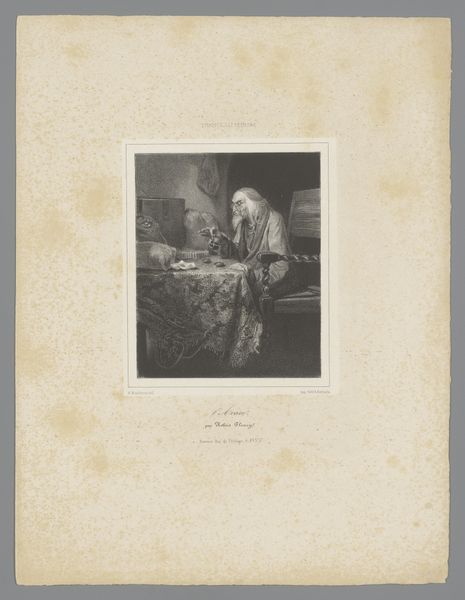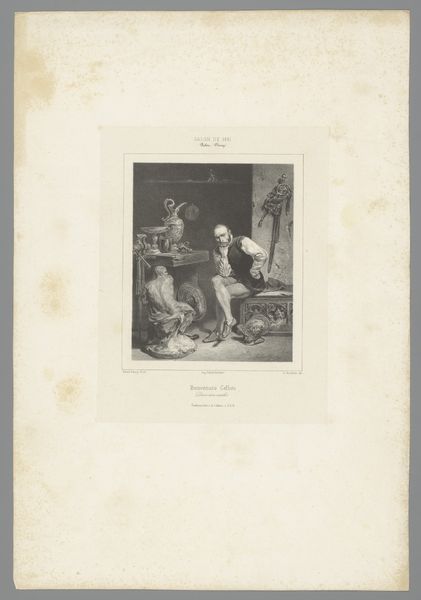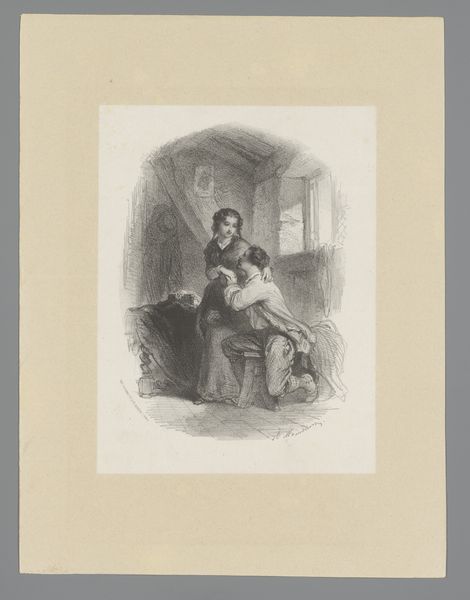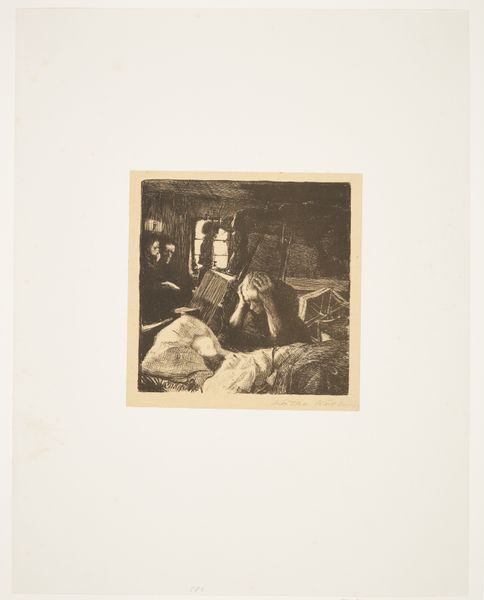
print, etching
#
portrait
# print
#
etching
#
romanticism
#
genre-painting
Dimensions: height 262 mm, width 204 mm
Copyright: Rijks Museum: Open Domain
Curator: Here we have "Painter with Jug in Window," an etching by Paulus Lauters, dating back to 1829, currently held at the Rijksmuseum. It presents us with a rather charming genre scene, characteristic of Romanticism. Editor: My initial impression is one of domesticity tinged with a hint of melancholy. The palette is limited, of course, but the stark contrast amplifies a sense of quiet isolation, the lone figure framed by that weathered window. Curator: Absolutely. Lauters's work is deeply rooted in its time. Romanticism sought to capture raw emotion, but I believe it’s imperative to consider the rise of industrialization that influenced that movement. The detailed depiction of quotidian life within these structures could be viewed as both celebration and criticism of those evolving conditions. Editor: I see the window as a significant emblem. Consider its architecture; it speaks volumes, echoing older dwellings of the craftsman while also inviting speculation of new possibilities in material terms. His vest is old school. Curator: The figure is, intriguingly, both confined by and presented through this frame. It suggests a simultaneous entrapment and display, much like labor exploitation. Editor: And that jug… its perfect roundness draws your eye immediately. For me, the orb symbolises daily labour – maybe the potter created it and uses that work for something more. Curator: Perhaps it is referencing an early capitalist model. The meticulous creation, controlled access to the resources… all that impacts their life choices Editor: Definitely. The way the light catches that pot really emphasizes its presence, which in itself becomes about so much. It feels like an ordinary life made eternal, or maybe a commentary of what labour has come to represent – something larger and of worth. Curator: I would even go further to propose, particularly viewed through a feminist theory lens, it underscores a tension between forced compliance and moments of liberation found in creative or functional activity. Editor: The scene provides us the intimacy needed to imagine his next move, whatever comes of it – giving agency in that moment of interpretation. Ultimately the symbolism captures larger questions on cultural values. Curator: Precisely. These early depictions force us to face the very construction and the structures behind labour conditions that impact individuals so fundamentally today. Editor: I find that I see a life beyond the surface, an image both simple and powerfully resonant.
Comments
No comments
Be the first to comment and join the conversation on the ultimate creative platform.
